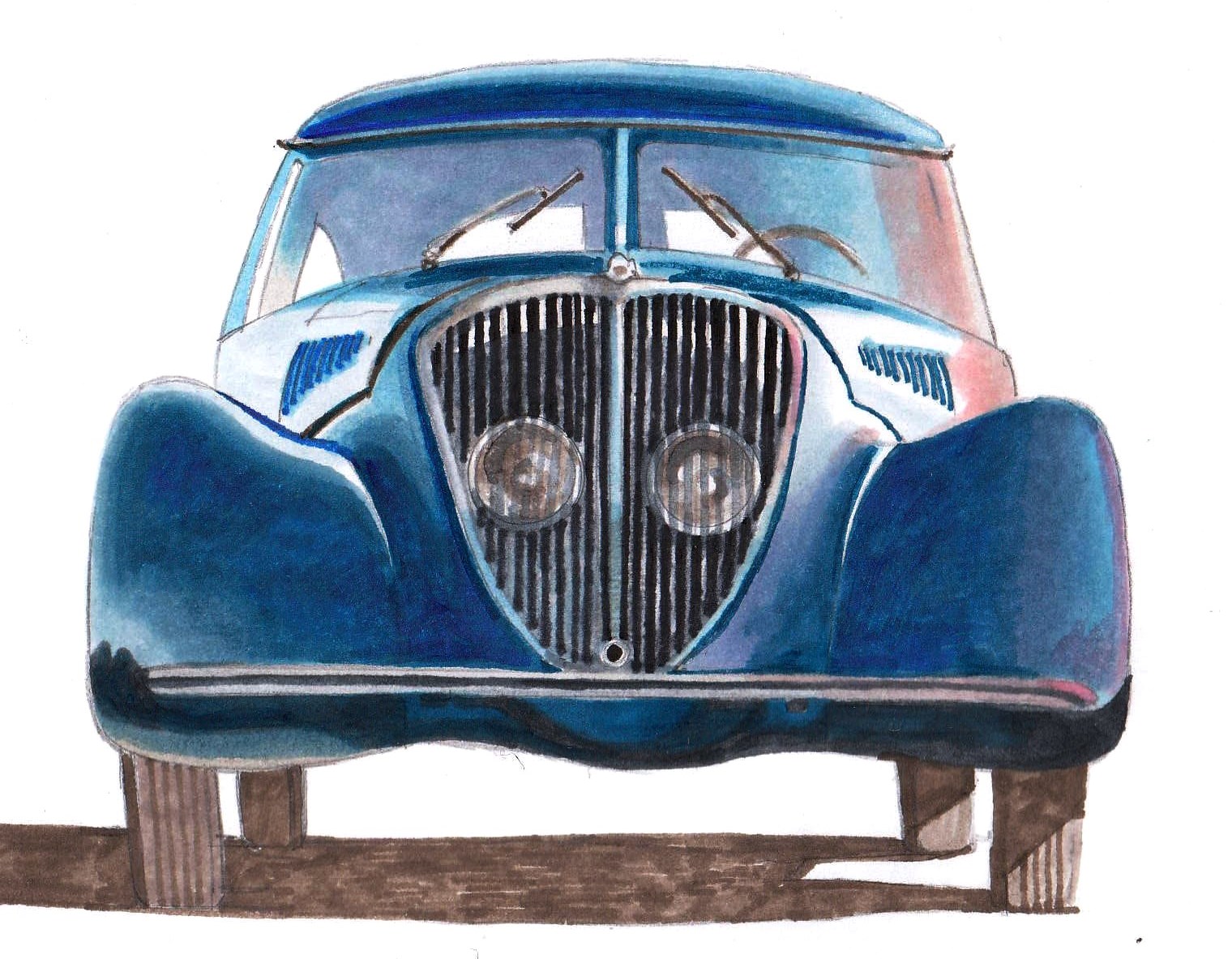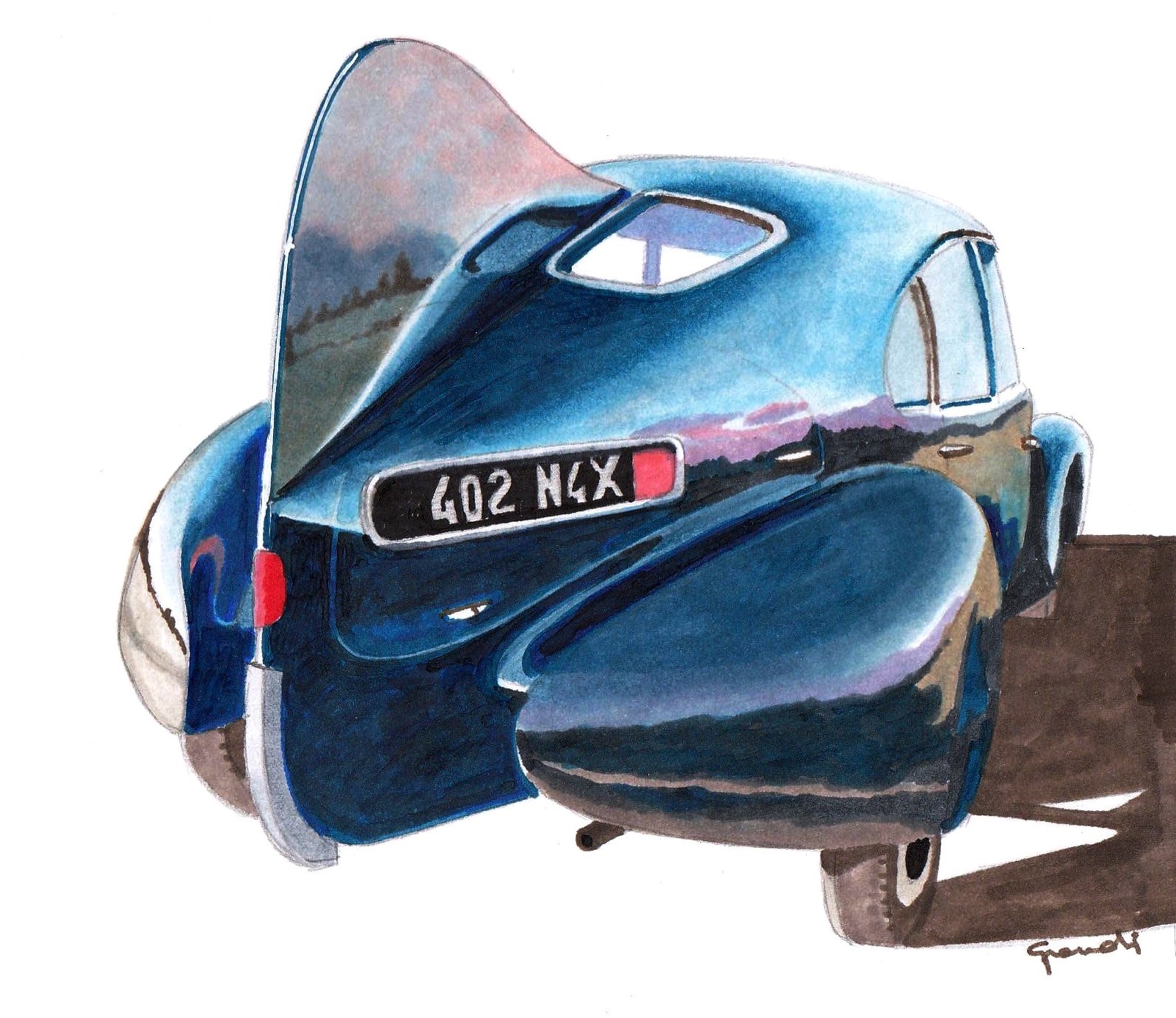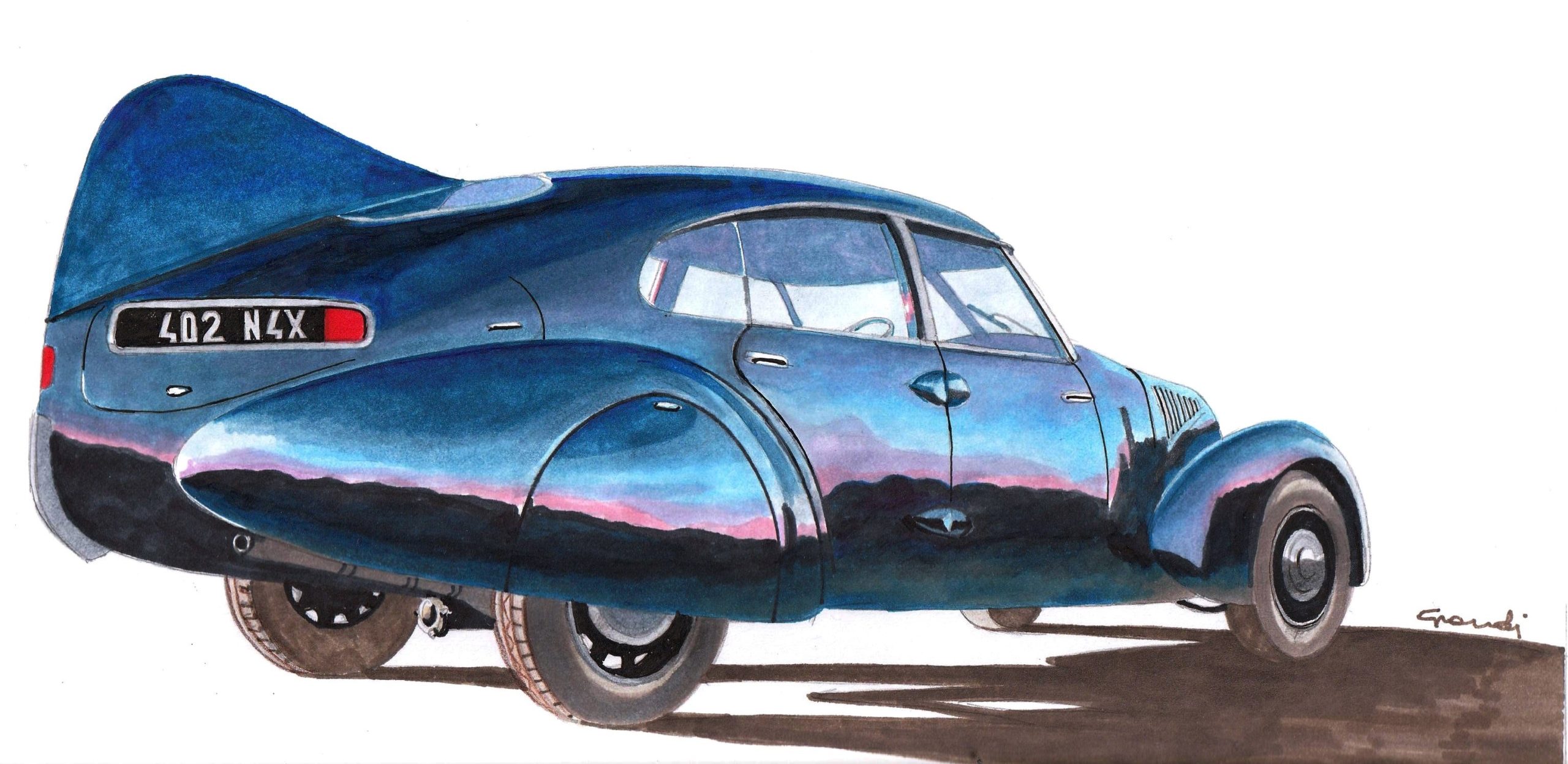Cosmetic surgery? Far more than just that
With the valuable support of Prof. Massimo Grandi's depth of knowledge and illustrative talent
Photo credit: Some images are taken from the book Asi Service "Quando le disegnava il vento" by Massimo Grandi
The 402 N4X, conceived and developed by the famous engineer Jean Andreau in 1935, can still be seen at the Peugeot Museum in Sochaux. The other five units produced were all destroyed during the war, and the project as a whole failed mainly as a result of that terrible trauma, which began at the end of 1939. Peugeot, keen for its 402 to be able to match the technically (although certainly not stylistically) innovative Citroën Traction, had recruited mechanical engineering and aerodynamics specialist Andreau precisely because of his aeronautical background and the experiments he had done as director of the Crasson Aerodynamic Research Center.

The finished vehicle was every bit as elegant as it was refined: Andreau retained the structure and shape of the 402, but focused on every detail, small or large, that might make it more efficient in terms of performance and consumption, without modifying the original engine. It is even said that the deal he struck with Peugeot was that he would be paid on the basis of the improvements actually shown by the new version.

Without altering the position of the headlights, which remained set behind the grille, the front of the car was given a “cleaner” look, through changes to the bumper, the shaping of the fenders and the door hinge fairings, while the interior, surrounded by curved windows, and the entire rear part of the car were redesigned with pleasingly harmonious lines. The rear fenders were rendered particularly attractive, as was the back of the car as a whole, which was topped by a generous fin, all these elements blending together perfectly. All this resulted in a CX of 0.34, as opposed to the 0.68 of the 402, as well as a 30% reduction in fuel consumption. The top speed, too, was boosted by the new design, increasing from 115 to 140 km/hour.

However, the fate of the 402 N4X was decided by two very different factors, which together were enough to ensure that it remained nothing more than a valuable prototype: first, the usual market resistance to anything that is deemed too new, and second — this was by far the more decisive factor —, the outbreak of WWII.
